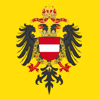Muscles Study Guide PDF
Document Details

Uploaded by SharperRiemann9659
San Francisco University High School
Tags
Summary
This document is a study guide covering topics about various types of muscles. It details the functions and types of muscles in the human body, such as voluntary and involuntary muscles, and includes a quiz about the muscles. Diagrams and quiz questions are included to aid in understanding.
Full Transcript
Bio notes Muscles Study Guide Info: How many muscles in the human body? - 638 Where is the largest muscle in the human body? - In the thigh Where would you find the smallest muscle in the human body? - In the ear What substance are muscles made from? - Protein What co...
Bio notes Muscles Study Guide Info: How many muscles in the human body? - 638 Where is the largest muscle in the human body? - In the thigh Where would you find the smallest muscle in the human body? - In the ear What substance are muscles made from? - Protein What controls muscles and how they work? - The nervous system What percentage of bodyweight are they - More than 40-50% Voluntary muscles - Voluntary means you control how they work Involuntary muscles - Involuntary muscles automatically and you don't realise it Excitable or irritable - Are capable of receiving stimulation and responding to stimulation from the nerves. - Muscles have a graded response to stimulation. They contract different amounts depending the frequency and the amount of stimulation Flexible - A muscle is able to return to its original resting shape and length after being extended or contracted ABduction - Moving body parts away from the body ADduction - Moving body parts towards the body Extension - Straightening and extending the joint to increase the angle between two bones or body parts Flexion - Bending a joint to decrease the angle between two bones or two body parts. Rotation - Moving a body part around an axis, left and right (neck) Muscles growing - Called hypertrophy Muscles decreasing - Atrophy Antagonistic muscles (muscles together) - Muscles are only able to pull as they are only able to contract - To ensure movement in two directions, muscles need to be in pairs - Muscles often occur in pairs, called antagonistic pairs. As one muscle contracts, the other relaxes - As one muscle contracts, the other muscle relaxes in an antagonistic pair Tendon - Muscle to Bone Fascia - Muscle to Muscle Quiz ting: 1. What is the technical term for muscle growing? hypertrophy 2. What is the technical term for muscle wasting? atrophy 3. What is the term for limbs moving away from the body? abduction 4. What is the term for a movement decreasing the angle between two bones or body parts? flexion 5. What is the term for a movement increasing the angle between two bones or body parts? extension Types of muscles: Cardiac Muscle (in the heart) - Involuntary muscle (not in control, happens automatically) - Found in the walls of heart - Contracts to circulate blood Smooth muscles (example: stomach) - Also involuntary muscles (not in control, happens automatically) - Found in the walls of organs or systems like the digestive system and respiratory system Skeletal muscles (example: biceps and triceps) - Attached to the skeleton, provide movement - Voluntary muscles ( in control, can move at free will) - Make up the majority of the muscle in your body All muscles in diagram tab ⬅️ Quiz ting part 2 1. Which type of muscle is found in the digestive system? 2. Which type of muscle is found in the heart? 3. Which is the only type of muscle that is voluntary? 4. Which tissue connects muscle to muscle? 5. Which muscles are found in the thighs? Diseases of the muscular system: - https://docs.google.com/document/d/1PSR39gIbeiytj1oXxhOYL 9mKdMzeEm0737aXqDuoAt8/edit?tab=t.0 Diagrams